September 1 – December 5, 2014
Field Report
In September, with the help of volunteers Joe and Grace, an extension to the greenhouse was constructed in order to have more space for storing supplies and for working. The ramada used for storage was tripled in size. There is now much more space for storing plastic bottles and a new area for working in the shade.



Despite a lull in volunteer support from mid-September through most of November, the Revegetation Project made extensive progress on a number of fronts. This is the end of the dry season, and we are focused on producing as many trees as possible before the rainy season commences.
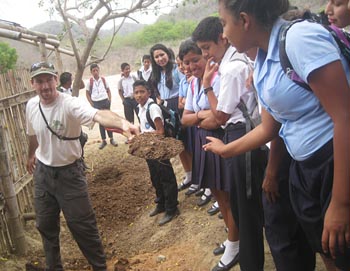

Revegetation workshops were held at the greenhouse with students from the Fanny de Baird school, Escuela Modelo, Montufar school, and a youth volunteer group from the Port Captain also visited.
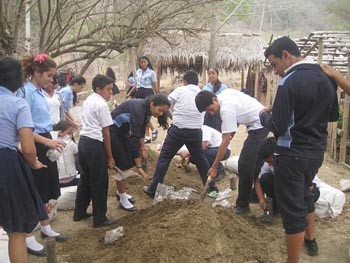



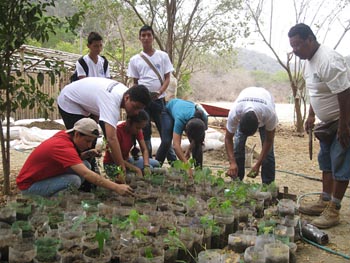
In regards to community outreach, we organized an education workshop at Los Algarrobos school in Canoa, and participated in the Port Captain’s open house. So in addition to distributing trees to multiple different communities, we also produced many more trees at the greenhouse with all of the visiting groups.
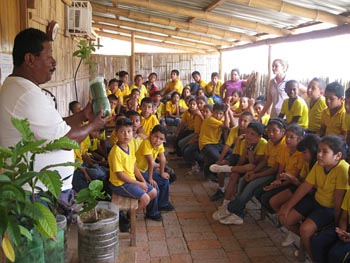
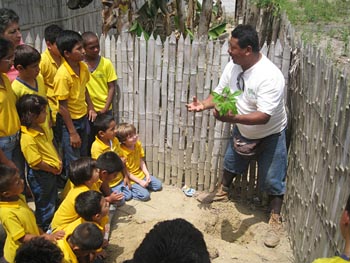

One of the teachers at Los Algarrobos school had received some Planet Drum trees in the past, and invited us to give a workshop at the school. We delivered one tree per student and faculty member the day of the workshop. The school assembled all of the students for us to give a presentation about Dry Tropical Forest restoration. After the talk, we showed the children how to plant their trees by planting 3 trees at the school. Before going home, each student received their tree to take home for planting. All of the students were incredibly excited about the prospect of getting to plant a tree.

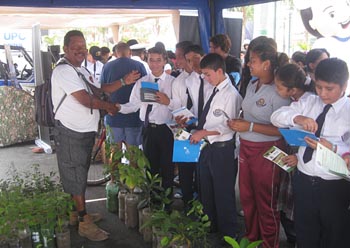
During the Port Captain’s open house, several of the schools that Planet Drum works with sent students to visit the various stands. Students who had already visited the greenhouse were excited to see trees that they helped plant being donated to the public. Many asked for more trees to take home. Some of them were even able to remember the names of the different species that we had on display.
One teacher from the Modelo school asked if we would hold a workshop with them, since we hadn’t ever worked with their school. Of course! Shortly thereafter, I visited them to arrange a workshop at the greenhouse. The multiplying effect of community outreach is extraordinary. Inevitably, at each event in which we participate, contacts are made for new participants in the project.
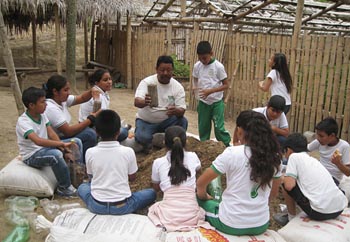

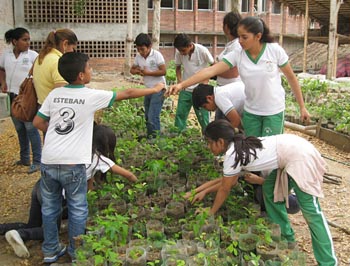
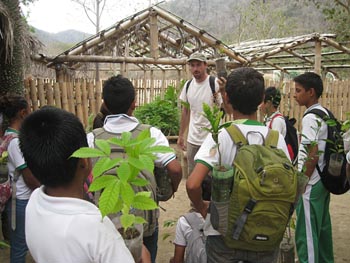
We also had the opportunity to deliver trees to San Isidro and collect seeds from Orlando’s family farm while we were in the area. Amarillo, Jaboncillo, Fernan Sanchez, and Achiote seeds were all collected. Once people in the community saw the trees that we had delivered, requests for more trees came flooding in, and hopefully we will have the opportunity to address them.
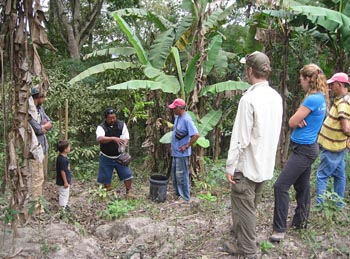
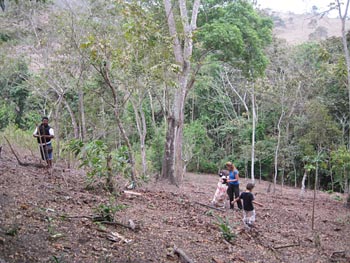
At the greenhouse, there are approximately 8,000 trees that are ready to be distributed to strategic partners, friends, communities, and the National Electric Company, which continues to work with Planet Drum as part of their ‘Electric Tree’ native fruit tree donation campaign. Planet Drum is now a part of the Electric company’s contract and their teams are obligated to distribute our trees (one tree per $500 of new infrastructure). In the near future they will be helping us to deliver over 2,000 trees to numerous communities in the region.
I was invited to a ceremony held by the Electric Company in Rocafuerte, where 50 trees were symbolically donated to various representatives. During the ceremony, I had the opportunity to give a short speech about Planet Drum’s ecological projects to the attendees. The city’s councilman planted a tree at the ceremony and expressed interest in receiving more trees for his community.
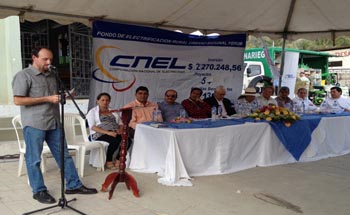
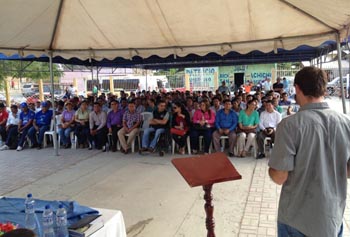
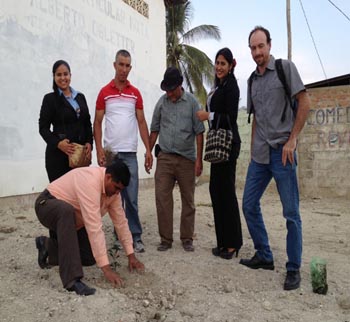
The work at the greenhouse is endless. Trees need watering, weeding, organizing, and loving care to grow properly. The compost is tended to. New seedbeds are prepared and seeded so that new batches of trees will germinate for the groups of visitors who come to participate in the Revegetation Workshops. Fortunately, a small group of volunteers (Nick, Kirra, and Jackson – all from the US) have arrived and are working as hard as they can to help the project progress.



We continue to explore ways in which to more directly involve students, communities, and the general populace of Bahia in the restoration of their surrounding forest ecosystem. Fortunately, interest in the project continues to be high and we are scrambling keep up with all of the different activities.
Looking ahead, we are on the brink of the rainy season and soon will be delivering our trees to communities around the Manabi province, where they will be planted in order to control erosion, restore habitat, preserve endangered tree species, and produce native fruits. All the while, we incorporate environmental education into the work as much as possible to involve locals in bioregional practices.
Pásalo bien,
Clay

I don’t think the title of your article matches the content lol. Just kidding, mainly because I had some doubts after reading the article. https://www.binance.info/en-IN/register-person?ref=UM6SMJM3